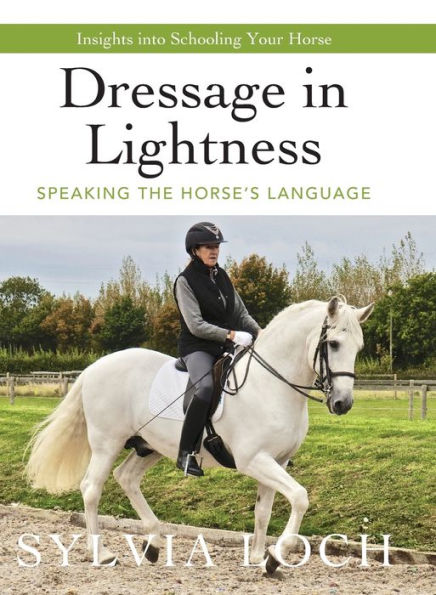Speak Your Horse's Language
When it comes to riding, it is easy to forget the horse’s point of view. To create a relationship of understanding between horse and rider, we need to understand what the horse feels when we communicate in a particular way. This innovative guide shows you how to improve your riding with better communication. Sylvia Loch clearly explains the importance of tapping into a horse’s excellent memory with good sensations. Loch focuses on helping the rider learn what movements help motivate a horse to learn new skills—and equally importantly--what feelings your horse may hate! By studying the muscle systems and understanding where your horse needs more support, it becomes easier to anticipate what he or she needs to feel in order to respond appropriately. Loch’s innovative approach is must reading for every equestrian looking to improve transitions, exercises and movements. “When to ask, and how to ask, has to be the foundation of good schooling, yet too often these factors are overlooked in the rider’s hurry to achieve.”-Sylvia Loch
Speak Your Horse's Language
When it comes to riding, it is easy to forget the horse’s point of view. To create a relationship of understanding between horse and rider, we need to understand what the horse feels when we communicate in a particular way. This innovative guide shows you how to improve your riding with better communication. Sylvia Loch clearly explains the importance of tapping into a horse’s excellent memory with good sensations. Loch focuses on helping the rider learn what movements help motivate a horse to learn new skills—and equally importantly--what feelings your horse may hate! By studying the muscle systems and understanding where your horse needs more support, it becomes easier to anticipate what he or she needs to feel in order to respond appropriately. Loch’s innovative approach is must reading for every equestrian looking to improve transitions, exercises and movements. “When to ask, and how to ask, has to be the foundation of good schooling, yet too often these factors are overlooked in the rider’s hurry to achieve.”-Sylvia Loch

Dressage in Lightness: Speaking the Horse's Language
290
Dressage in Lightness: Speaking the Horse's Language
290Hardcover(Reprint ed.)

Product Details
| ISBN-13: | 9781635616965 |
|---|---|
| Publisher: | Echo Point Books & Media |
| Publication date: | 05/07/2019 |
| Edition description: | Reprint ed. |
| Pages: | 290 |
| Product dimensions: | 8.25(w) x 10.75(h) x 0.94(d) |
